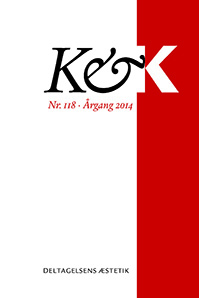Hvordan ved litteratur?
DOI:
https://doi.org/10.7146/kok.v42i118.19846Nøgleord:
Literature and knowledge, archive, speech Act, J.P. JacobsenResumé
Taking its point of departure in an example from Jens Peter Jacobsen’s novel Niels Lyhne (1880), where Jacobsen apparently describes the way in which tuberculosis is transmitted two years before it was demonstrated by the German physician Robert Koch, this article discusses which different knowledge positions, literary works can take. Arguing that this is a question of fundamental importance to our understanding of the work’s relationship to the surrounding world as well as of the work in itself, three responses are proposed. Firstly, one can perceive of the literary work as appropriating knowledge, which corresponds to a perception of it as an archive. This implies a retrospective analytical focus on the pre-requisites of literature to articulate knowledge. Secondly, one can perceive of the work as circulating knowledge, which corresponds to a perception of it as a medium. This response implies a synchronous analytical focus on the way in which the knowledge articulated by the work is embedded in contemporary thought collectives. Thirdly, one can perceive of the work as generating knowledge, which corresponds to an understanding of it as a speech act. This implies a prospective analysis on the very way in which the work articulates know-ledge. In this respect, literary works differ from medical works in at least three ways: it articulates knowledge in a casual manner, it articulates knowledge in the present tense, and it articulates knowledge in the form of an event that takes place to the readers.
Downloads
Publiceret
Citation/Eksport
Nummer
Sektion
Licens
Tidsskriftet følger dansk ophavsret.





